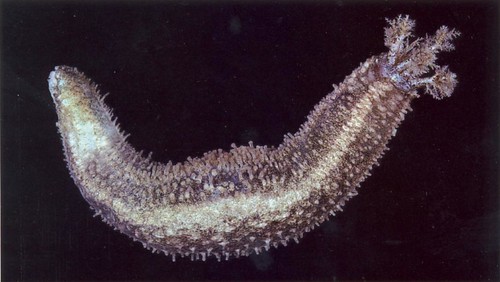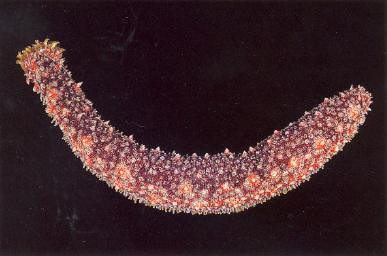I've brought attention to some of the effects of global warming recently on asteroids and others have written about ophiuroids but have not written much about the effects of pollution on echinoderms...
Today, I bring to your attention a new paper by Erin R. Graham (Saint Joseph's University) and Joseph T. Thompson (Franklin & Marshall College) in the 2009 Journal of Experimental Marine Biology and Ecology-"Deposit-and suspension-feeding sea cucumbers (Echinodermata) ingest plastic fragments".
The effects of this:
 Plus this:
Plus this:= trouble???
The authors of the study studied four subject species: Holothuria fieldana, H. grisea, Cucumaria frondosa and Thyonella gemmata in the lab and compared these results with data from three different field sites along the Atlantic coast.
They used these to study the experimental feeding rates/effects of small plastic bits as they were ingested by sea cucumbers, which are widely ecologically important deposit feeders.
Lab Analysis
The feeding component basically involved artificially seeding an artificial aquarium with plastic shavings and many different kinds of plastic bits-thread, rods, bits, etc.
 They discovered that sea cucumbers were preferentially ingesting between 2 and 20 fold MORE plastic fragments per individual (per 4 hour interval) then was expected (I gather they assume "expected"= random).
They discovered that sea cucumbers were preferentially ingesting between 2 and 20 fold MORE plastic fragments per individual (per 4 hour interval) then was expected (I gather they assume "expected"= random).Remarkably, one species Cucumaria frondosa ingested 73 times more plastic ribbons then expected!
They basically conclude that this was a preference of the individual species. The shapes and sizes were variable factors-but ultimately they strongly influenced the sea cucumbers' predisposition to feeding.
This becomes important in just a moment....
Field Studies & Environmental Impacts
The authors complemented their lab work with field studies and found 105 to 214 pieces of plastic per liter of sediment!
 And MORE important? They identified the toxic PCB from one of the more northern localities at a concentration of 0.0106 ug/g suggesting that PCB can be ingested by invertebrates in these soft-sediment communities!
And MORE important? They identified the toxic PCB from one of the more northern localities at a concentration of 0.0106 ug/g suggesting that PCB can be ingested by invertebrates in these soft-sediment communities!
ADD to this? The fact sea cucumbers will PREFERNTIALLY ingest plastic bits over sediment.
- Sea cucumbers preferentially PREFER to ingest plastic bits.
- Plastic bits are COMMON in sediment (where sea cucumbers live).
- Plastic bits can impart toxic PCBs which are ingested in great quantities by sea cucumbers.
So, these would be ecologically important on their own-but imagine how important this would be in places where people EAT sea cucumbers!




No comments:
Post a Comment